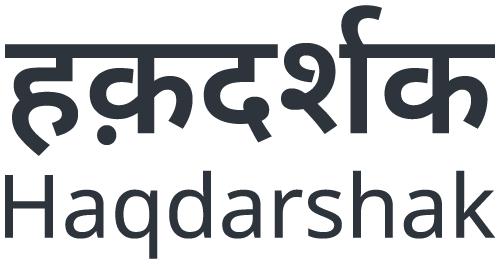The Role of Aadhar and DBT
in Delivering Scheme Benefits

By Prashant Bhide
01 / The DBT Mission
4% of India’s Gross Domestic Product (GDP) is attributed to Central and State Government subsidies and transfers1.
For years, the administration has struggled to deliver social protection benefits because of basic challenges like identifying and targeting the correct beneficiaries. This translates to delays in delivery and leakages which amount to almost 2% of the GDP every year2.
To solve the targeting-related gaps, the Government launched a major reform initiative in the form of the ‘Direct Benefit Transfer (DBT) Mission’ on January 01, 2013. The main objectives of this mission are to directly deliver scheme benefits to beneficiaries, remove leakages, and enhance financial inclusion.
This article explores the context within which the DBT system was developed, highlighting the key factors that have contributed to its continuing expansion. Critically, it outlines the significant role of the Aadhaar in enabling the DBT mission and moving towards a more streamlined and efficient benefit delivery system.
02 / The Role of Aadhaar
The Aadhaar system, started in 2009, is the largest biometric identity programme in the world. As a universal identity accepted across the country, the system provides a portable proof of identity and enables mobility to millions of people who migrate across the country. The Aadhaar also solves the problem of identity verification of beneficiaries and weeds out duplicate beneficiaries, enabling the targeted delivery of scheme benefits.
Before the Aadhaar card, documentation requirements for scheme applications were disaggregated and varied across states. Separate IDs were issued for most schemes like the Mahatma Gandhi National Rural Employment Guarantee Scheme (MGNREGS) Job Card, Ration Card, and Mother and Child Protection (MCP) Card. While these separate IDs persist, they are now linked to the beneficiary’s Aadhaar number, reducing the necessity for separate documents.
03 / Other Enablers
Launched in August 2014, the Pradhan Mantri Jan Dhan Yojana (PMJDY) is a Government initiative to enhance financial inclusion, offering access to services like basic savings bank accounts. Over 50 Crore Jan Dhan accounts have been opened as of August 2023, with one in two accounts opened between March 2014 to March 2020 being a PMJDY account3.
This has addressed the critical gap that existed concerning the large sections of unbanked populations. There was also an exponential increase in mobile phone usage during this period, with the teledensity (calculated in terms of mobile subscriptions per 100 people) jumping from 68.64 in 2013 to around 81 in 20224.
Linking Aadhaar with mobile phones and bank accounts completes the ‘JAM Trinity’ (Jan Dhan-Aadhaar-Mobile), which creates the foundation for enabling welfare scheme benefits through DBT.
04 / Process Outline
Essential components in the DBT cash subsidy process include Aadhaar-based beneficiary authentication (using demographic, OTP, or biometric details) and the mapping of the beneficiary’s bank account on the Aadhaar Payment Bridge of the National Payments Corporation of India (NPCI)5, facilitated by Aadhaar seeding with the bank account
05 / Benefits Delivered through DBT
In 2013-14, in its first year of implementation, DBT covered 28 schemes. The mission has since expanded its coverage by more than tenfold, covering a total of 314 schemes6..
The total funds transferred have also increased from around INR 7.4 thousand crore to INR 716.4 thousand crore in 2022-23. In 2013-14, 10.8 Crore non-unique beneficiaries received subsidies. That number jumped to 165.97 Cr in the year 2022-23.
The beneficiary coverage of DBT cash transfer schemes saw a spike during the COVID-19 period (FY 2020-21), reaching as high as 98 Crore citizens from the 70.5 Cr in FY2019-20. The COVID-19 spike also indicates that the robust DBT infrastructure can be scaled up quickly as per the requirements of the situation.
06 / Scheme Coverage
The first phase of DBT implementation started with schemes related to student scholarships, supporting the welfare of women, children, and workers. As the number of schemes covered expanded, the scheme categories diversified.
Launched on February 2, 2006, the MGNREGS guarantees at least 100 days of manual labour at minimum wages to rural households seeking employment. One of the major issues associated with the scheme in its first decade was the significant delay in wage payments7. The delay was attributed to the wage payment process — this involved transferring wages to Gram Panchayat bank accounts, requiring workers to collect payments at the Panchayat office, causing delays.
After 2015, with increased bank account coverage through PMJDY and over 100 Crore Aadhaar enrollments, linking Aadhaar numbers with bank accounts laid the groundwork for implementing DBT in MGNREGS. The introduction of the Aadhaar-Based Payment System (ABPS) significantly improved wage payment timelines. In 2014-15, 26.9% of the payments were generated within 15 days8, which increased to 95.55%9 as of December 2022.
Another DBT success story is the Pratyaksh Hanstantrit Labh (PAHAL) scheme, which provides beneficiaries with an LPG subsidy. In the year 2022-23, 20.8 Crore beneficiaries received subsidies worth INR 9833 Crore.
PM Kisan Scheme is one of the largest DBT schemes globally, directly transferring funds to farmers’ Aadhaar-linked bank accounts. Since its launch in 2019, the Government has dispersed over INR 2.60 Lakh Crores to more than 11 Crore farmers, of which over 3 Crore are women10.
To ensure that only the eligible beneficiaries are provided the scheme benefits, farmers’ Aadhaar are used for verification purposes, including eKYC. The eKYC process consists of providing the OTP received on an Aadhaar-linked mobile number or by authenticating biometric details at a Common Service Centre (CSC). In 2023, the Government launched a face authentication service on the PM-KISAN mobile app.
07 / Aadhaar-Based Authentication
Along with enabling the receipt of scheme benefits through DBT, Aadhaar also facilitates access to other schemes as well.
In the case of Ayushman Bharat-Pradhan Mantri Jan Aarogya Yojana (PMJAY), which provides forms of health insurance, the beneficiary list has already been prepared based on various exclusion and deprivation criteria, as per the Socio-Economic Caste Census (SECC) of 2011.
To avail of the cashless hospitalisation benefits, eligible citizens must approach designated hospitals with the Ayushman Bharat Golden Card. This card is generated once one completes the Aadhaar-based eKYC process, making the process paperless and hassle-free.
During the COVID-19 period, the Government of India launched an initiative called ‘One Nation One Ration Card’ to enable the nationwide portability of benefits of subsidised grains provided as per the 2013 National Food Security Act (NFSA).
This intervention was based on two aspects — the first was the availability of operating electronic Point of Sale (ePoS) devices and biometric scanners (for fingerprints and/or irises) at fair-price shops. The second aspect involved the linking of beneficiaries’ Aadhaar number with their Ration Cards11.
Thus, by simply seeding the Aadhaar of all the family members listed on the Ration Card, a person can avail of subsidised rations from any fair-price shop of their choice located anywhere in the country. As per the latest data available on the NFSA portal, about 99.5% of Ration Cards have been seeded with Aadhaar and 98% of transactions have been Aadhaar-authenticated.
Aadhaar can also serve as a universal identifier across beneficiary databases for various government schemes, streamlining the identification of eligible recipients and enhancing targeted service delivery.
The National Health Authority (NHA), responsible for PMJAY, has enriched the beneficiary database by integrating Ayushman Bharat PMJAY beneficiaries from SECC 2011 with those eligible for benefits under the National Food Security Portal (NFSA). This integration, facilitated by Aadhaar as a common identifier, allows beneficiaries to access information about their PMJAY entitlement using their Ration Card number.
Moreover, the Government has initiated the compilation of the ‘National Database of Unorganized Workers (NDUW)’ via the e-Shram portal. This database plays a crucial role in understanding the distribution and nature of the unorganised workforce and can guide policymaking for this population segment. The paperless data enrollment process is achieved by fetching demographic data from Aadhaar during the creation of an e-Shram card, authenticated with the citizen’s consent through an OTP sent to their Aadhaar-linked mobile number.
Senior citizens receiving pensions must submit a life certificate annually to ensure uninterrupted pension payments. Traditionally, this required physical presence at a Pension Disbursing Bank, Post Office, or designated Government Office, but with the introduction of Jeevan Praman, a Digital Life Certificate can be generated through Aadhaar-based biometric authentication, eliminating the need for physical visits. The Certificate can be obtained using the Jeevan Praman app or the Aadhaar Face RD app.
08 / Beneficiaries Covered
The elaboration above highlights the fact that Aadhaar authentication services and DBT schemes have impacted a very diverse coverage of citizen cohorts.
Initiatives such as Pradhan Mantri Matru Vandana Yojana (PMMVY) for maternity benefits and the LPG gas subsidy directly contribute to women’s empowerment. In FY2023, approximately 50 lakh students received scholarships worth INR 8584 Crore through the National Scholarship Portal and other state-specific portals. In the same year, 3.81 Crore citizens who belong to the Below Poverty Line (BPL) category and are elderly, widowed, or have a disability, received assistance of INR 3546 Crore under the National Social Assistance Programme (NSAP). Additionally, in the fiscal year 2022-23, PM-KISAN transferred INR 6000 to the bank accounts of 10.9 Crore farmers.
Through the simple process of fetching Aadhaar details with the consent of citizens, more than 29 Crore eShram cards have been generated to date, which has enriched the repository of unorganised sector workers in the country.
Further, every Indian citizen can create their digital health footprint by creating a Digital Health ID (an ABHA number) under the Ayushman Bharat Digital Health Mission. This just requires citizens to permit fetching their Aadhaar details through Aadhar-based OTP authentication.
Aadhaar and DBT have enabled the delivery of welfare and social security to women, students, the elderly, those with disabilities, farmers, and workers across the country.
09 / Conclusion
The DBT method of delivery of social protection schemes has had a great impact in enhancing the feeling of entitlement among citizens as it removes most of the intermediaries and discretion that previously came with the process.
From the Government’s perspective, it is a way of reducing leakages in the delivery of welfare benefits and building trust with last-mile citizens. However, consistent efforts are required to expand the coverage of banking networks and digital connectivity. Strong grievance redress mechanisms are needed to address the technical glitches that interrupt benefit delivery.
Finally, Aadhar is pivotal in this architecture of scheme delivery. Linking a mobile number with Aadhar costs between INR 50 and INR 100 at a CSC or Aadhaar Facilitation Centre. Seeding an existing bank account with Aadhar does not involve any additional cost, and only requires the consent of the citizen.
However, the multiplier effect of these two linkages is huge since it will enable citizens to access government services that they are eligible for. Based on the data on the DBT Bharat portal, the FY2023 per beneficiary transfer of in-cash subsidy was around INR 3607. If we take the cost of Aadhar linkages with a mobile number and bank account to be around INR 100, the multiplier effect is clear.
History is witness to the fact that technology brings path-breaking transformation at a scale. With Aadhaar as a tool and DBT as a mode, technology has permanently transformed the social protection ecosystem.
1https://dbtbharat.gov.in/data/documents/DBT%20Flyer%204-7-2016.pdf
2https://dbtbharat.gov.in/data/documents/DBT%20Flyer%204-7-2016.pdf
3https://static.pib.gov.in/WriteReadData/specificdocs/documents/2023/aug/doc2023828246001.pdf
4https://www.ceicdata.com/en/indicator/india/teledensity-mobile
5https://dbtbharat.gov.in/data/documents/SOP%20for%20DBT%20Payments.pdf
6https://dbtbharat.gov.in/
7https://www.indiabudget.gov.in/budget2019-20/economicsurvey/doc/echapter.pdf
8https://www.indiabudget.gov.in/budget2019-20/economicsurvey/doc/echapter.pdf
9https://pib.gov.in/PressReleaseIframePage.aspx?PRID=1885507
10https://pib.gov.in/PressReleaseIframePage.aspx?PRID=1947889
11https://static.pib.gov.in/WriteReadData/specificdocs/documents/2022/nov/doc20221125135701.pdf



